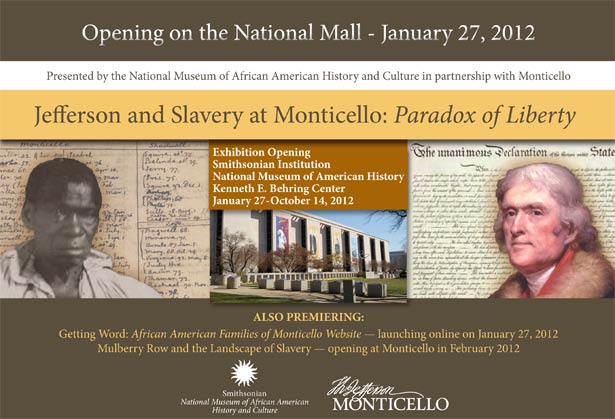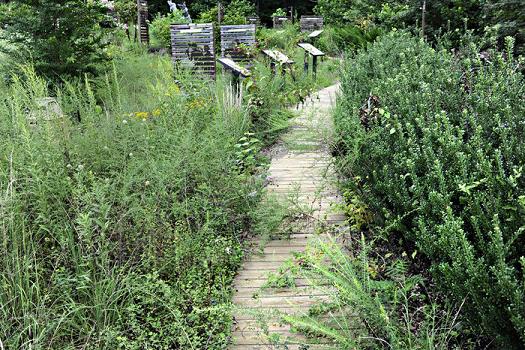The Constitution: Is it broken?
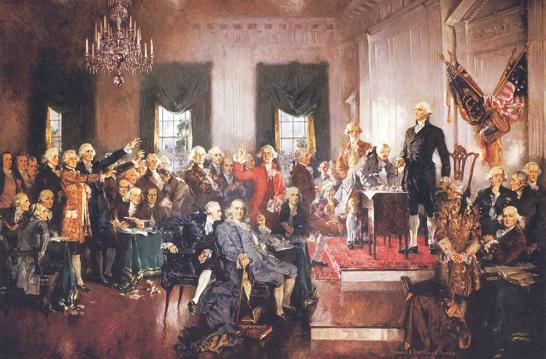
The Constitutional Convention, Philadelphia PA.
Strictly an Op-Ed…
On September 17, 1787, the United States Constitution was signed solidifying the newly formed American nation as a united republic. Each year on this date, Constitution Day is recognized as the national day of celebration commemorating the ratification of this vital document.
America’s political divide has sparked a renewed interest in the Constitution. I cannot think of any other time in which this charter has been more hotly debated by both sides of the political spectrum. Each party seems to have assumed proprietorship over the Constitution in order to support their own respective agendas. This biased exploitation has forced voters on both sides to reexamine the document in an attempt to not only interpret what the Founding Fathers may have intended, but also to determine how the document’s precepts fit in today’s modern society.
Some analysts and attorneys have stated that the Constitution has become antiquated and far too restrictive. To them, it prevents the country from achieving any substantial political growth. Others believe the document to be infallible and demand that it remain exactly as is. (The last addition to the Constitution occurred in 1992 when the Twenty-seventh Amendment prohibited any law that increased or decreased the salary of members of the Congress from taking effect until the start of the next set of terms of office for Representatives.)
As a document that both empowers and limits government, it is understandable that the Constitution is viewed differently. In one camp, constitutional experts believe that the charter begs updating as America has undergone radical changes over the last 200 years. This includes drastic expansion in the country’s culture, ethnicity, religious mixes, and technology. The United States is a much more diverse and tolerant society, whose status in the world has been drastically altered in recent years. One could also argue that the size and structure of the government has grown far beyond its constitutional framework and that the Founding Fathers could never have envisioned the global society that we live in today.
Others believe that the U.S. Constitution must remain untouched and preserved in order to maintain the sanctity of the oldest government charter that is still in effect. When it was drafted, America was an infantile, largely untapped area, rich in natural resources and lacking in population. It had risen against all odds to defeat the most powerful military on the planet in order to secure an unlikely independence. It also became the first country to go from straight colonialism to a democratic republic. In their minds, the Constitution must be preserved as the keystone in the legislative foundation of the country.
Both sides have a point. There is something extraordinary about the United States Constitution and we should all remain eternally grateful to the men who crafted it. At the same time ‘their world’ no longer resembles ‘our world’ and America must adapt. We appear to be running in place while less gifted countries are passing us by.
While on campaign in 2008, Senator Barak Obama stated that people tend to focus on what the Constitution says the government can’t do, while he prefers to focus on what it says the government can do. Following his election, the Tea Party vehemently opposed this perspective stating that the U.S. Constitution is the most significant restraint on Federal power that we have.
There is the inherent risk of preventing political progress in favor of preserving the past. I think the answer comes down to accountability, enforcing what the Constitution says, while proposing more amendments for what it doesn’t. It can be a working and living document if managed in the way it was intended. It should guide us in what the government can’t do, but perhaps even more important in today’s world, it should help us identify what the government can do.
My opinion is that the U.S. Constitution should not be viewed as a political hindrance and the United States Government should not be viewed as the enemy by its own people. If neither appears to be working then logic dictates that a change is necessary. Change can be good.
The architect and author of the document James Madison himself said, “Do not separate text from historical background. If you do, you will have perverted and subverted the Constitution, which can only end in a distorted, bastardized form of illegitimate government.”
Perhaps we should look no further for guidance than Abraham Lincoln who calls upon all of us to first change ourselves in order to change our government. He said, “We the people are the rightful masters of both Congress and the courts, not to overthrow the Constitution, but to overthrow the men who pervert the Constitution.”
Posted by ny5/pinstripepress
at 10:35 AM EDT
Updated: Thursday, 1 September 2011 10:11 AM EDT
Permalink |
Share This Post
Indemnity in black and white (then and now)
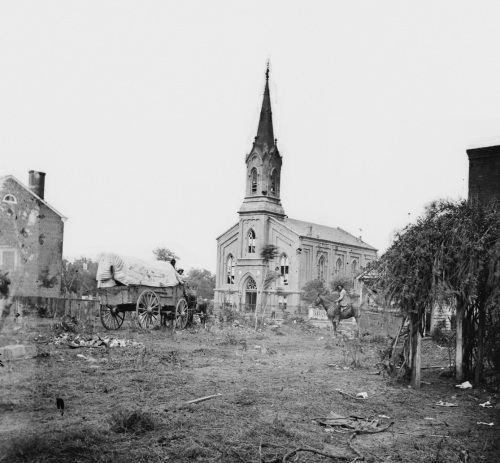
A damaged Fredericksburg Baptist Church
Although our attentions were drawn towards new catastrophes, this past week marked the anniversary of the costliest natural disaster in American history, Hurricane Katrina. You may recall the controversy surrounding that event as New Orleans’ poorest population appeared to be overlooked in the days immediately following the storm. Spike Lee and HBO just released a documentary titled “If God is Willing and da Creek Don't Rise” which examines the local, state, and federal government’s failure to take care of its most needy citizens following Hurricane Katrina. One thing that this film makes abundantly clear is that class and race played a big part in the demographic of those most affected by the storm. The poorer one was, the more desperate their plight. And the least likely they were to receive financial aid in an expeditious manner.
As the sequel to Lee’s “When the Levees Broke: A Requiem in Four Acts,” this film returns to the Big Easy five years later to re-visit the progress of rebuilding. What we are learning now is that there was a distinct difference in how Katrina’s victims were treated. If a property was commercially profitable or located in a historical district, it has already been rebuilt and re-opened. If it was a private residence located in an economically-challenged area, it’s probably still a mess. (There are a handful of private, celebrity, and religious organizations tending to these homes.)
Even when the federal government provided aid to Katrina victims, they cut corners and ended up hurting folks more than helping them. Thousands of poor, displaced residents were provided with temporary trailers to live in. Unfortunately, these mass-produced mobile homes were later found to contain dangerous amounts of Formaldehyde which resulted in many children and seniors developing serious breathing problems. Some people even died prematurely due to their exposure to it. The vast majority of residents living in these ‘poisonous’ trailers came from those neighborhoods which were hardest hit. These also happened to be predominantly poor, black communities. Perhaps most disturbing of all is the fact that many of these citizens, with limited insurance, have yet to receive complete compensation for lost property or possessions. This proves that racial and class inequality still exists in the United States of America.
Although victims of a man-made disaster, thousands of southern citizens also filed claims to the U.S. Government seeking compensation for property that was lost or damaged during the American Civil War. Most of these claims resulted from destruction incurred during the occupation of the Federal Army. Many of the churches that were involved in the Battle of Fredericksburg, or any battle for that matter, submitted itemized claims to the court of the United States government, as a petition to recover the cost of damages. All of these cases took years to come to fruition and involved a tedious and detailed investigation whereby members of the congregation, as well as unbiased witnesses, testified in order to prevent the commission of insurance fraud. The required criteria for granting a claim involved several factors that had to be determined by the panel conducting each investigation.
This included a formal declaration that absolved the churches from charges of insurrection and treason for supporting the Confederate States of America. Although each church was eventually granted this absolution, it was most likely as given as an amicable political gesture on behalf of the U.S. Government. The comparison presented here parallels the experiences and claims of the white and black Baptists churches in Fredericksburg, Virginia. As we are now seeing with the victims of Hurricane Katrina, there was a clear divide between how each of these churches was treated by the government. It unfortunately shows that for how far we have come, we still have a tremendous way to go.
FREDERICKSBURG BAPTIST CHURCH
Source: Court of Claims Congressional Case No. 11,786. Baptist Church of Fredericksburg, Virginia vs. The United States. Entire report including petitions, letters, and examination transcripts. U.S. Treasury Department, (Fredericksburg/Spotsylvania NMPS, Bound Volumes).
The testimony of a gentleman from Fredericksburg Baptist Church named S.J. Quinn outlined an eye witness account of the experiences of the church during the battle and its aftermath. The Court Of Claims, regarding the case of the Baptist Church of Fredericksburg Virginia versus the United States (Case No. 11768 Cong.), presented a deposition taken on the 13th day of April 1905, before E.F. Chesley, a notary public. The STATEMENT OF CASE read:
This is a claim for occupation of and damage to the church building of the Baptist Church of Fredericksburg, Virginia, alleged to have been used and damaged by the military forces of the United States during the late civil war, stated at $4000.00. The claim was referred to the court February 28, 1905, by resolution of the United States Senate under act of Congress approved March 3, 1887, known as the Tucker Act.
G.W. Hott, an attorney representing the claimant, conducted the direct examination of Mr. Quinn who was, at the time, a 68 year-old Baptist and the superintendent of the City Water Works, as well as the church's most recent clerk.
Q.[uestion] Where did you reside during the late civil war?
A.[nswer] I was a Mississippi soldier and came to this city in November 1862.
Q. How long did you remain here?
A. I did picket duty in town from that time until the first of January following and was then quartered in the town until June 2nd 1863.
Q. Were you acquainted with the size and character of the church building of the Baptist Church at that time?
A. I was in the building several times during that period.
Q. State what you know about the condition of the building its furniture and fixtures at that time.
A. The building is constructed of brick and is 46x60 feet inside measurement. The building is the same size now that it was at that time. The same walls still remain. I did not see the building before it was damaged. When I saw it everything had been taken out of it-the pews were gone; my mind is not clear about the pulpit. The main part of the walls on the outside were in fair condition; the inside had been injured very much and the steeple was very much injured; I do not remember about the doors and windows.
Q. Do you know by whom this damage was done to the building?
A. While I did not see the damage done, it was done by the Federal Army while in the occupation of the town; the destruction was very great all over the town.
Q. When were you again in the town after 1863?
A. I visited here in 1865 but did not visit the church and came here to live in May 1866. The building was under repairs when I came here on '66.
Q. Do you know anything about how much it cost to repair the church as a result of the damage done by the federal forces?
A. Of my own personal knowledge I do not, but I am clerk of the church and have been since 1873 and as such clerk I am custodian of the records of said church. I find in the minutes of the church a statement bearing directly upon the repairs. I have a copy of the said minutes in which I have compared with the original entry in the minute books and he same is a true copy. I will give this in and ask that it be made a part of my deposition in this case. (The papers is here offered in evidence and marked "Exhibit A".) I might add that the dimensions given above were the inside measurements of the auditorium room, but the outside measurement, including the vestibule is 75x52 feet. The building is two stories high. [E.F. Chesley and S.J. Quinn then signed the document.]
Included in the documentation regarding the damage claims by the Baptist church were excerpts from the minutes ("Exhibit A" referenced above) from a church meeting held on October 29th, 1869. It stated:
On motion of Col. C.M. Braxton following preamble and resolutions were unanimously adopted.
Whereas this Church after the late war found it's House of worship very much damaged and the pews, seats and furniture nearly all destroyed, requiring an expenditure of some $4,000.00 and upwards to repair the House and replace the pews, seats and furniture, and did by resolution on the 26 day of December 1866 assess the sum of $25 upon each pew as the cost in part of replacing the same, requiring all parties owning pews, who were not members of the congregation at the time, and who had not contributed or aided in restoring the pews and repairing the House, to pay the sum as assessed, before their rights severally to such pews would be recognized by the church, and,
Whereas the Church at a subsequent meeting on the 27th of November 1868 did by resolution instruct the Treasurer to notify the several pew owners interested, that unless the said assessment was paid by the time therein interested, that unless the said assessment was paid by the time therein setforth, that their respective pews would be sold to the highest bidder and the assessment deducted from the proceeds of such sale, and,
Whereas in pursuance of this resolution the said several parties were notified and it appearing that none of the pew owners had responded to this action by the Church the Pew Committee met on the day appointed for the purpose of selling the pews and the probability of their being sacrificed.
The direct examination of Mr. Quinn continued:
Q. Have you the records or minutes of the church during the war period?
A. I think that the records of that period must have been destroyed as they never came into my hands. But I find the following memorandum: "The committee find that the church records up to June 27, 1862 are preserved. From and after which time nothing appears in the shape of a record until August 20, 1865 when the minutes are entered in the present church book. The period of time included between the above named dates being the period of which the church has no records." This record was made as it appears on the 24th of April, 1868, and is the report of a committee giving a history of the church covering the years for which there is no record.
Q. Do you know whether or not the congregation continued to hold services in the church after the occupation by the federal forces?
A. The record shows that no services were held after the bombardment in December, 1862.
A cross-examination followed as conducted by W.W. Scott, counsel for the defendant:
XQ. Have you you[r] possession or have you had in your possession the church book containing the minutes of the church meetings up to June 27, 1862?
A. I have not.
XQ. Do you know whether or not the confederate forces ever occupied or in any way used the church building before the federals entered Fredericksburg?
A. I think not. I do not know positive I was not here the first part of the war. I was here before the battle and there was no occupancy of the town until after the battle commenced.
XQ. When you were here in November, 1862 did you see the church building?
A. Not the interior.
XQ. You never saw the interior of the church until after the 11 and 12th of December, 1862?
A. No sir.
XQ. How soon after that did you see it?
A. I think I was in there several times during the months of March, April, and May 1863.
XQ. You do not know then of your own knowledge who injured or damaged the church building before you saw it on the inside about March, 1863?
A. Not of my own knowledge.
In answer to the final interrogatory the witness says he knows nothing further. [E.F. Chesley and S.J. Quinn then signed the document.]
Fifty years from the end of the War Between the States, the members of the Fredericksburg Baptist Church finally received financial restitution from the Federal Government in the amount of $3000.00. Damages to the building and its contents included countless bullet and projectile holes, shattered windows, damaged or stolen pews and missing furniture. Books and other items were also destroyed or missing. In lieu of aid from Washington D.C., most of the area's churches were able to petition funds from northern churches on their behalf, as well as local pledges from wealthier citizens whose accounts had not been as devastated as their less fortunate brethren. Eventually in May of 1865, they were able to resume worship, regain membership, and reestablish their influence in the community.
SHILOH BAPTIST CHURCH (OLD SITE)
Source: Court of Claims Congressional Case No. 11,781. Trustees, Shiloh (old site) Baptist Church, Fredericksburg, Va., vs. The United States. Entire report including petitions, letters, and examination transcripts. U.S. Treasury Department, (Fredericksburg/Spotsylvania NMPS, Bound Volumes). Returning to the months immediately following the war, one of the first goals of the newly established Shiloh congregation was to join their white peers in submitting a claim, using the Omnibus Claim Bill. It enabled Southerners to petition for financial reimbursement for damage inflicted on their properties due to the actions of the Federal Army. As outlined in the previous chapter this involved a long and meticulous process, which involved detailed witness testimonies and cross-examinations.
The testimony of four gentlemen, George Triplett, Charles Mander, Thomas Dennis and Reverend George L. Dixon, from Shiloh Baptist Church, outlined eyewitness accounts of the experiences of the church during the battle and its aftermath. "THE COURT OF CLAIMS of Trustees of Shiloh (old site) Baptist Church of Fredericksburg Va., vs. The United States (Case No. 11781 Cong." presented the deposition taken on July 29, 1904. The claim was for a sum of $3000, including reimbursement for $900 worth of repair costs that had already been incurred by the church. The STATEMENT OF CASE read:
This is a claim for use of and damage to the church building of Shiloh (old site) Baptist Church, of Fredericksburg, Virginia, by the military forces of the United States during the late civil war, stated at $3000.00. The claim was referred to the court February 28, 1905, by resolution of the United States Senate under act of Congress approved March 3, 1887, known as the Tucker Act.
The Abstract of Evidence that follows in the report outlines the testimonies of Shiloh's representatives. The first witness to take the stand was a longtime church member named George Triplett who presented his first-hand knowledge of the Union soldiers' conduct and resultant damage. Unlike many of his comrades, Triplett "stuck it out" and remained in the area as the fighting raged on around him.
The following evidence was taken under the rules of the court July 29, 1904:
George Triplett testifies:
My age 71 years; my residence, Fredericksburg; my occupation that of a drayman; I have no interest in this claim. (P.1, Record.) I resided in Fredericksburg during the late civil war. I came here in January 1862 and have not been away from the place a month since. (P.2, Record.)
Loyalty. The Shiloh Baptist (old site) did not give any aid at all to the rebellion. This church is the Shiloh Baptist (old site) Church. (P.2, Record.)
Merits. The Union Army occupied the church December, 1862. At that time they used the basement to put their horses in and the upper part was used for the soldiers to stay in. They then occupied it for sometime while Grant was operating in the Wilderness, using it for a hospital.
During this occupation they took out all the windows and all the pews, and knocked out the pillars, and by taking out the pillars the corner of the building afterward fell out. They also took the seats out of the gallery and the steps leading up to the same. They also knocked the side off the gallery; the ceiling was all knocked down and we had to have it plastered. (P.2, Record.)
Burnside's troops occupied the building in 1862, and the second time it was Grant's troops. (P.3, Record.)
I don't think the building could have been fixed up as good as it was before the troops occupied it for $3000.00[.] It would have cost more than that because the floors were out, and the taking out of the pillars compelled us eventually to tear down the church. The present church is on the same foundation. I suppose it is about 40 x 50 feet. It was constructed of brick. (P.3, Record.)
Cross-examination.
I was a member of Shiloh Church during the war. It is a Baptist.
We repaired the church some three or four years after the war, and then in 1890 rebuilt on the same foundation-had to rebuild because the corner of the side fell out. (P.4, Record.) The first repairs made after the war cost about $900.00. The value of the building in 1861 was about $4000. and it is now worth more than $6000.00-cost from six to seven thousand dollars.
The building was used from the time it was repaired after the war up to 1890 when it was rebuilt. The repairs were temporary and did not put the building in as good condition as when war xxx xxxx [appears to have been crossed out] came on. (P. 5, Record.)
Triplett's associate, Thomas Dennis, gave a much more detailed summary of the Federal Army's presence at the church. Although he wasn't a member of the congregation, his witness of the events surrounding the damaging of the building that stood a few blocks from his home proved to be valuable testimony. Due to his location in town, one may assume that Mr. Dennis was a white citizen who may have been able to observe the events both prior to and shortly after the occupation ended. Upon inspection of Shiloh Baptist Old Site's handwritten membership rolls, as well as the U.S. Census of free inhabitants of 1860, no "Dennis" appeared in any form, reinforcing the notion that no family member attended the church either. Therefore the witness must have been called as a non-biased outsider.
Thomas Dennis testifies:
I am about 65 years old; I live in Fredericksburg, Va.; occupation, butcher; no interest in this claim and not a member of the Shiloh Baptist Church. I lived in Fredericksburg during the civil war, about six blocks from the Shiloh Baptist Church. (P.8, Record.)
Merits. The Union troops used the building for a hospital and put their horses in the basement. They used the building when Hooker was here and then they used it for some four or five months when Grant was here. They tore up the floors, knocked out the windows, took the pews and almost destroyed the inside of the church. They also took out some of the pillars under the basement part, which later caused one end to fall out of the building and the church had to be rebuilt. (P.9, Record.)
It was in fine condition when the troops took possession. The church used to belong to the white Baptists but several years before the war the colored Baptists bought it and the whites built another one. The building was constructed of brick and was the same size as the one that has been rebuilt and in fact is built on the same foundation. I saw the church measured in the morning and it is 46 x 60 feet, and of course the old one was the same size as the new one as it was built on that foundation. (P.10, Record.)
Loyalty: The Shiloh Baptist Church didn't have any money to contribute to the aid of the rebellion and wouldn't have done anything if they had been able. (P.10, Record.)
Cross-examination.
The name of the church denomination is the Shiloh Baptist Church (old site). The congregation rebuilt this church about 1890. It had been repaired before that time. (P.10, Record.)
Redirect-examination.
I should say that it would have cost no less than $3000.00 to restore the church to the same or as good a condition as it was in before the troops occupied it. (P.11, Record.)
The church's longtime minister, Reverend George L. Dixon testified later to an error with regard to the church's original claim. He recalled that:
There never was any Shiloh Methodist Church here. I had lived in the town about 65 years. That was a mistake in the way the bill was drawn. It was the Shiloh Baptist Church instead of Methodist. This church, and the one that was used and damaged by the troops is known as the Shiloh Baptist Church (old site). There is now another Shiloh Baptist Church here, known as the "new site" and is a branch of this church and was founded in about 1890. (P.13, Record.)
A scrivener's affidavit is attached to the official report transcripts testifying to the error. It states:
Shiloh Baptist (Old Site) Church, Fredericksburg
11781
Note: The index has this church listed under 11027 but in that file there is a card cross-referencing the claim to 11781. Within the file for 11781 are several items referring to Shiloh Methodist Church, 11027. The mixup is sorted out in the following claim; what appears to have happened is that a claim for Shiloh Methodist was filed in error and it was later realized that there was no wartime Shiloh Methodist. (Shiloh Methodist has its own listing in the index, as 11761, but as before a card in that file cross-references the claim to 13325, which belongs to the Heirs of Gen. John Sevier.) In fewer words: there is one claim, for one church - Shiloh Baptist - and all the mentions of Shiloh Methodist are accidental.
Each church was found to exhibit loyalty to the Union in the Summary Statement of each case, but Shiloh Baptist Church (Old Site) may be the only one who truly deserved that distinction. Many members of the city's white congregations would have inevitably supported the Confederacy, as members of its clergy and loved ones were serving in the field. An African church however, no matter how peacefully co-existing it was, would not have been remotely enthusiastic in supporting a cause that intended to preserve the institution of bondage over its membership. Additionally, as a colored congregation, many of the members fled north following the initial occupation of the town. Any support of the wartime effort would have most likely been as Federal wagon teamsters, stretcher-bearers and even soldiers in the Negro regiments.
Ironically, it was the African Baptist church that received only 50% of the monies petitioned ($1500) from the government, while many of the neighboring white churches received close to the full amount claimed. This proved to be just one more example of the many civil rights hardships that confronted black Southerners for another 100 years. Despite winning their freedom, African-Americans were called upon to meet additional challenges, as Jim Crow laws and segregation stifled their independence and equality in the post-Civil War South. Unfortunately, the United States government, who had also tolerated the institution of slavery for many years, but shed the blood of thousands to abolish it, came up short far too often when it came to the promise of true equality for black Americans.
The documentation for each of these federal investigations is on file at the Fredericksburg / Spotsylvania National Park Service archives. The evidence and findings for one witness in each congregation's testimony was cited throughout this study. It is important to note that all of the churches of Fredericksburg (and Spotsylvania) were not awarded any money for more than fifty years after the war concluded.
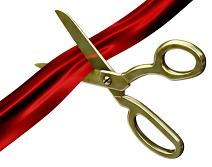 Today it gives me great pleasure to announce that All-Access Battlefield Tours (LLC) is officially open for business!
Today it gives me great pleasure to announce that All-Access Battlefield Tours (LLC) is officially open for business! 






